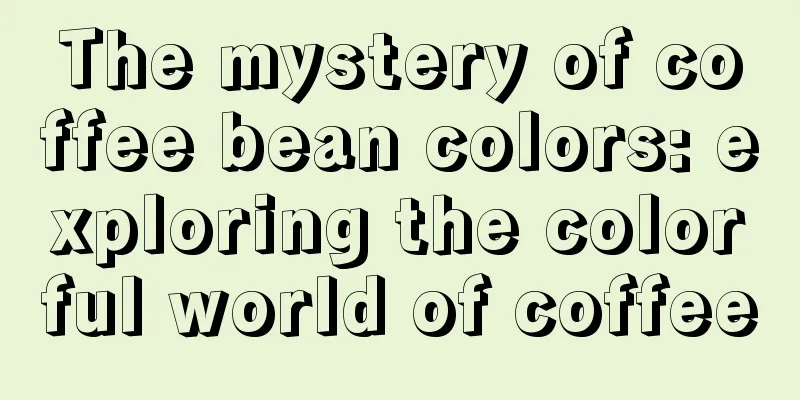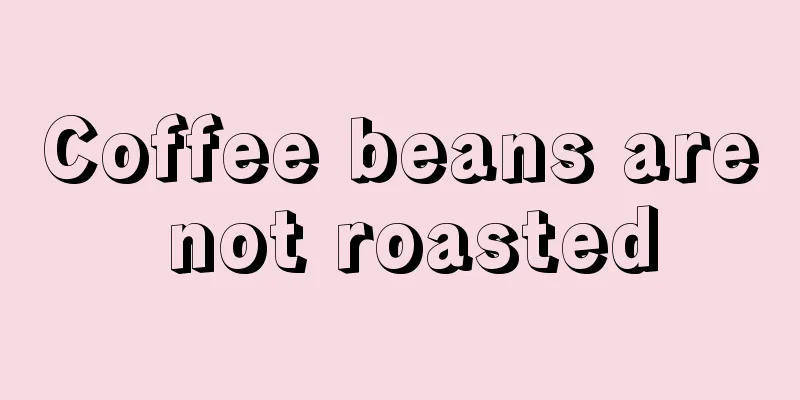The mystery of coffee bean colors: exploring the colorful world of coffee

The mystery of coffee bean colors: exploring the colorful world of coffeeCoffee is a global drink that is loved by people. However, have you ever wondered why coffee beans have different colors? There is a mysterious and interesting story behind this. Let's uncover the mystery of coffee bean colors and explore the colorful world of coffee. 1. Original color: greenWhen we look at a freshly picked coffee fruit, we find a beautiful, glossy green seed inside. This is the coffee bean in its original state. During the ripening process, the beans are picked and dried without being processed and then form their original color - green. This stage is also called "green beans" or "backer". 2. Baking and changes: from yellow to brownWhen it is decided to process and roast the green beans, they will go through a series of changes. First, the coffee beans will change from green to yellow. This is because the moisture inside the beans is heated and evaporated during the roasting process. As time goes by and the temperature rises, the yellow color gradually turns to brown. During this process, the starch inside the coffee beans begins to convert into sugar, producing a rich and complex flavor. 3. Roasting degree and color: light roast, medium roast and dark roastCoffee beans will show different colors according to the degree of roasting. Light roasting usually heats the coffee beans to yellow-brown or light brown, and retains the original flavor and acidity. The medium roast produces a darker brown color and a more balanced, rich taste. Deep or dark roasting gives the coffee beans a shiny and smooth surface and creates a spicy, bitter but rich and strong taste. 4. Special colors: Blue Mountain and White CoffeeIn addition to the common green, yellow-brown and dark brown, there are some special coffee bean colors. For example, coffee beans from the Blue Mountain region of Jamaica appear light green or bronze, because the soil and climate conditions in the region have a special impact on coffee growth. White coffee is a traditional Malaysian drink that has been specially processed. During the production process, unroasted or lightly roasted beans are treated with oil to give them a light yellow or light brown color. 5. Color and flavor: complex and diverseDifferent colors of coffee beans often mean different flavors and tastes. Light roasting usually retains the original fruit aroma and acidity, and has a fresh, floral taste. The medium roast balances acidity and sweetness, delivering a balanced, rich, chocolatey, and nutty flavor. Dark roasting produces a rich bitter, caramel and chocolate taste, suitable for people who like strong flavors. 6. ConclusionThe mystery of coffee bean colors reveals the diversity of the coffee world. From the original green to the brown after different degrees of roasting, each color represents a different flavor and taste. Whether you like fresh and sour or rich and fragrant, you can always find coffee beans that suit your taste. So, when enjoying a cup of delicious coffee, you can savor its rich and diverse flavors more carefully and experience the surprise and fun brought by coffee beans of different colors. |
<<: Geographical distribution of the world's top ten coffee bean producing regions
>>: The Mystery of How Coffee Beans Grow: Where Do They Come From?
Recommend
How to make coffee from coffee beans
Key factors in selecting coffee beans Choosing th...
Cafe Investment Budget Planning
Cafe Investment Budget Planning Before opening a ...
Drip coffee review, find the best drip coffee in 2021
Recently, drip coffee reviews are in full swing, ...
"Coffee Knowledge" The Origin of Specialty Coffee and the Characteristics of Specialty Coffee Beans
For coffee industry exchanges, please add private ...
The best coffee beans you can't miss, the perfect choice for enjoying top-notch flavor
The best coffee beans you can't miss, the per...
The perfect blend of coffee beans and water, enjoy the mellow taste
The perfect blend of coffee beans and water Coffe...
Milk coffee: rich and mellow, with a mellow taste
The rich aroma of milk coffee Milk coffee, as a c...
Hand-cranked coffee bean grinder brand recommendation
Hand-cranked coffee bean grinder brand recommenda...
Coffee shop customer attraction strategy: unique charm and warm experience to create a good time
introduction As a social place, attracting custom...
Latte coffee is priced at a bottle or a box, with surprise discounts waiting for you!
Latte coffee is priced at a bottle or a box, with...
Coffee beans for making coffee
Choosing the right Starbucks coffee beans: how to...
Hangzhou PT Pull Ring Coffee: Enjoy the unique aroma and quality time
Hangzhou PT Pull Ring Coffee: Enjoy the unique ar...
The perfect steps to brew coffee from coffee beans
The perfect steps to brew coffee from coffee bean...
How many coffee beans in 500ml water
Guide to the standard ratio of coffee beans to wa...
Aroma roasting, the black gold temptation of coffee beans
Aroma roasting, the black gold temptation of coff...









